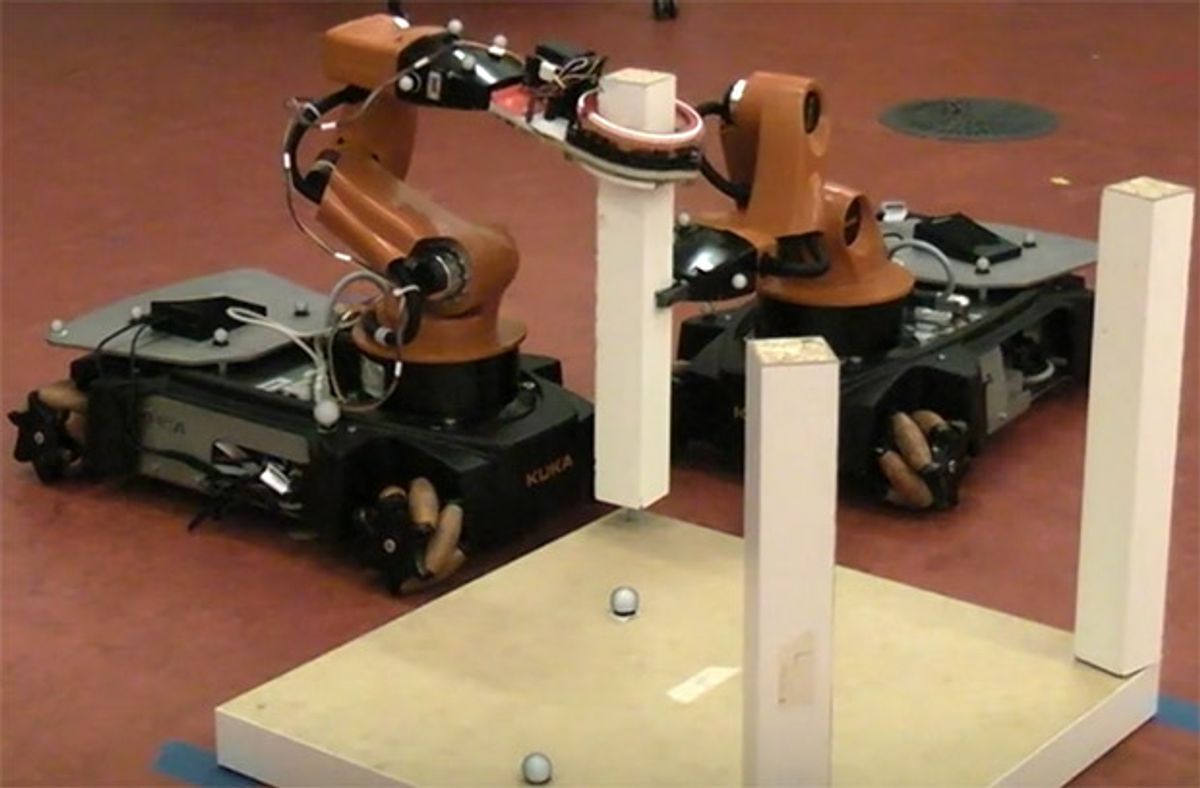Oh, IKEA. Your modern and affordable Scandinavian-inspired furniture is full of such promise. We tell ourselves over and over again that yes, we really are smarter than a bunch of flat pack boards and fastening devices that look like they could function as legal tender on some alien planet. It’s not true, though. We’re not smarter than a disassembled Lack table, and this is why we need robots.
Last week we saw robots that can help you put together your IKEA furniture. But now a team at MIT has gone one step further: Their IkeaBot can do everything by itself. As the researchers write in a paper presented this week at the 2013 IEEE International Conference on Robotics and Automation (ICRA), "We believe that this paper represents the first autonomous robotic system to assemble a piece of IKEA furniture." Welcome to the future!
There are a couple things to keep in mind about the demo in the video: first of all, it’s fully autonomous, and the entire assembly takes only 10 minutes. There’s nobody driving the KUKA youBots around, and they’re deciding on their own when (or if) cooperation is necessary to achieve their goal. And second, it’s not like the robots were programmed with instructions on how to assemble an IKEA Lack table: in fact, they weren’t even shown those cryptic printed diagrams. Instead, the robots use a "geometric reasoning system" and a "symbolic planner" to figure out how a bunch of parts should be attached to one another, keeping in mind that all screw holes should be used and that no parts should be left over. This works even when the final shape is unknown: the bots just know that one thing must attach to another thing in a given way, and they keep on doing that until hey, it’s a table.
And while the software is obviously quite clever, it’s the innovative gripper that makes it possible for the robots to get the job done. Called the Torq Gripper, it uses two counter-rotating wheels joined by rubber bands to grip just about any shape with a high amount of compliant torque, and then rotate it. It’s worth mentioning that the Canadarm (the robotic arm on the International Space Station) uses a similar gripping system.
Granted, we would like to see these bots building other, more complex pieces. Say, a Bestå TV and media storage cabinet and shelving combo system. The MIT researchers say they're working on it. They want to make their system applicable to a general set of assembly tasks (though for larger pieces they might want to use a stronger KUKA). They also hope to give humans the opportunity to get more involved in the process, but seriously now, we’re totally happy to just sit this one out.
"IkeaBot: An Autonomous Multi-Robot Coordinated Furniture Assembly System," by Ross A. Knepper, Todd Layton, John Romanishin, and Daniela Rus from MIT, was presented this week at ICRA 2013 in Germany.
Evan Ackerman is a senior editor at IEEE Spectrum. Since 2007, he has written over 6,000 articles on robotics and technology. He has a degree in Martian geology and is excellent at playing bagpipes.



